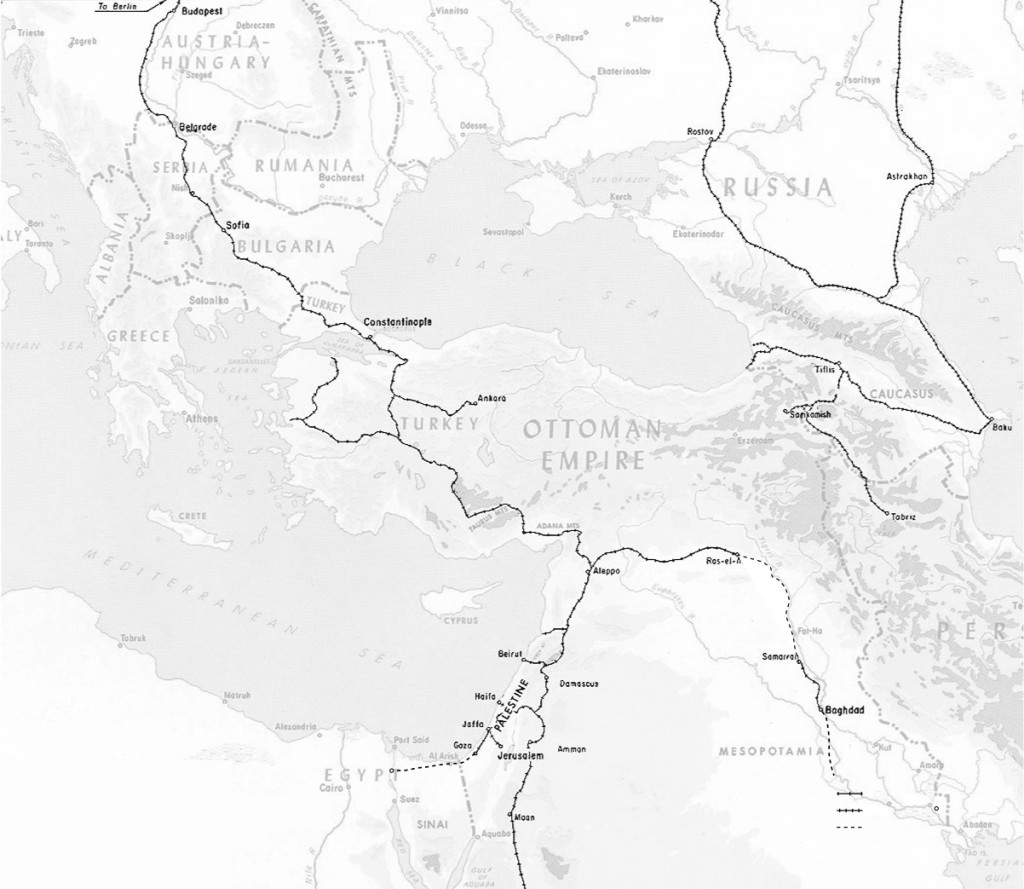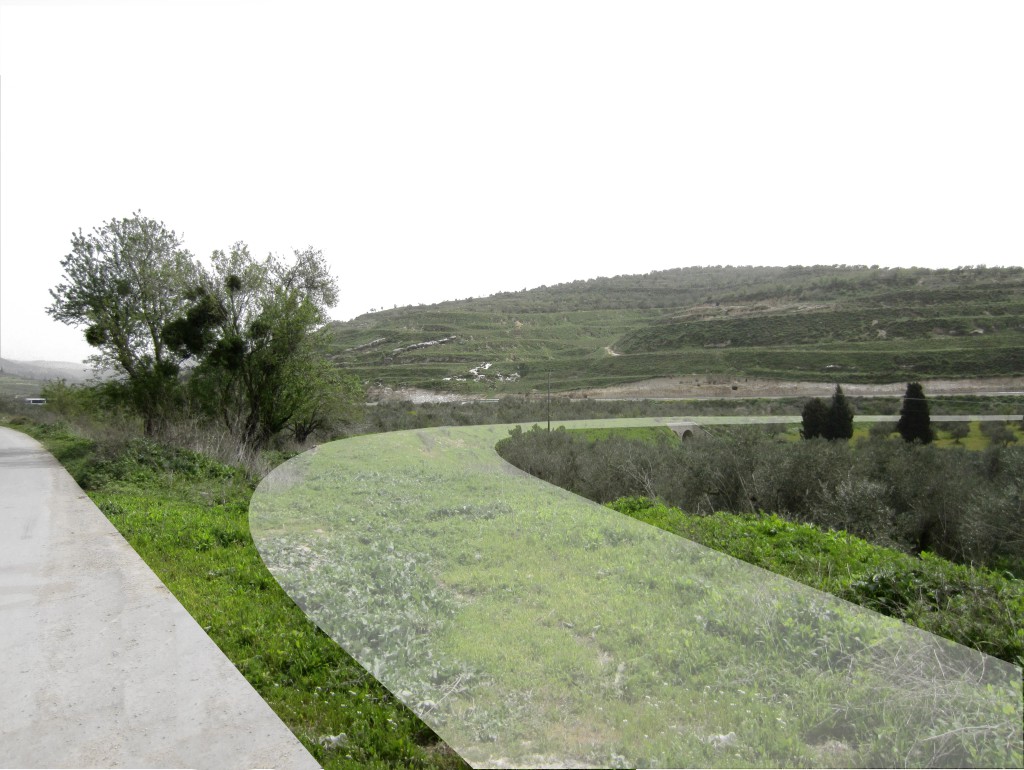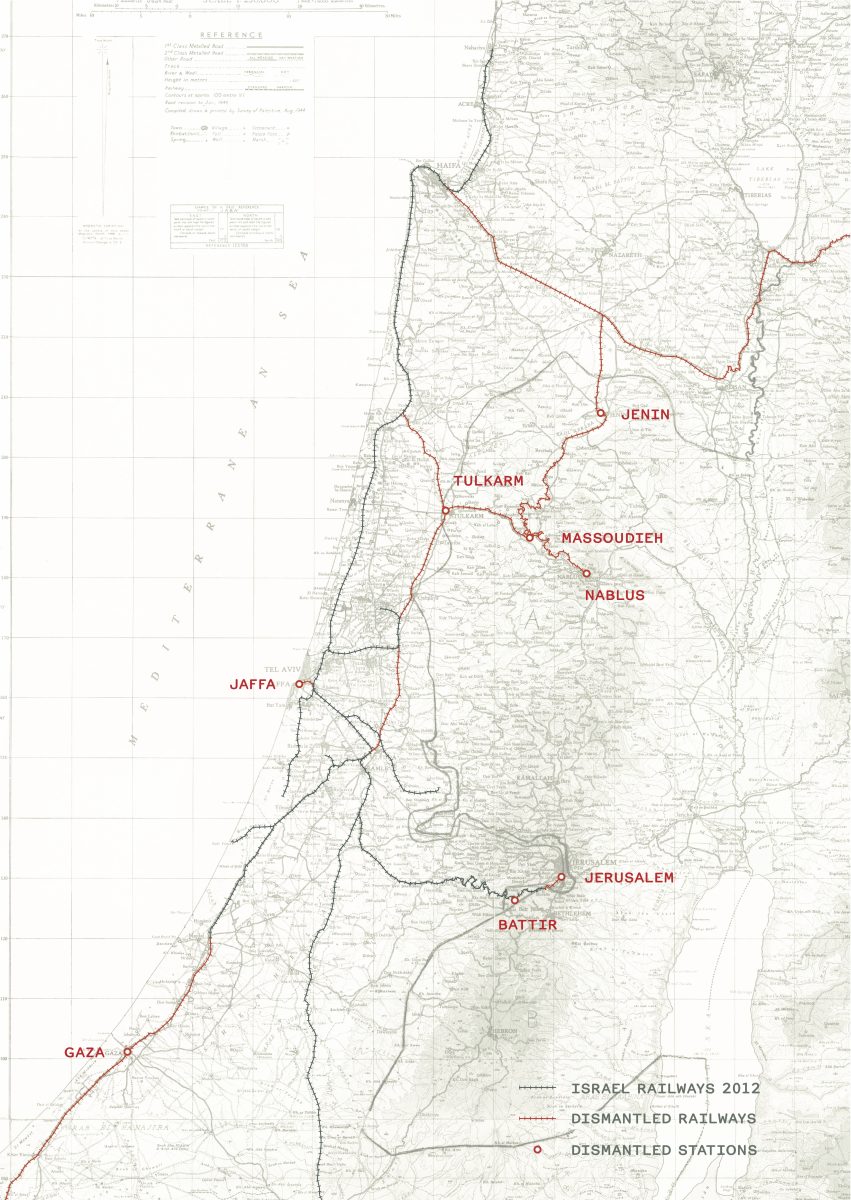Ottoman Empire and the Turkish railway network, 1914
At the beginning of the twentieth century, the Ottoman railway network connected the Middle East to an extent that is unthinkable today. Although it is found mostly dismantled across the region today, the traces of this former network are embedded with both the memory and possibility of connection.
Traces of the railway tracks near Massoudieh, 2012
Mobility in the region was initially provided by colonial powers that sought to facilitate transport for diverse purposes. The first railway route, constructed by a French firm, was inaugurated in 1892, connecting Jaffa and Jerusalem. This approximately ninety-kilometer stretch opened Jerusalem to European visitors arriving in Jaffa. Shortly thereafter, the Ottomans began building a series of routes that extended train service into the north of Palestine. This railway, named after the Hedjaz region, aimed to connect Damascus with Medina and Mecca, facilitating pilgrimage to the holy cities. Later it was also military-related transport demands during WWI that accelerated the construction of railways in Palestine. Both the Ottomans and the British created new routes while they simultaneously disconnected others, relocating the raw materials, the rails’ wood and iron, to the most strategic sites on different occasions. After defeating the Ottomans, the British took over the network and founded Palestine Railways, which reestablished civilian train service and intensified commercial and recreational use of the railway.
Geopolitical developments in the region have greatly influenced the network, such that the former lines and stations have become part of radically different contexts. With the creation of distinct, sometimes antagonistic nation states across the Arab world and the establishment of the Israel in 1948, the network was broken into isolated circuits that were soon dismantled. These remaining fragments situated within different countries only sporadically cross national borders. In Palestine, the sections of the tracks now within the State of Israel were partly reestablished under the Israeli public railway system. However, in what was once the core of the network—today the West Bank and Gaza—the lines are in ruin and out of service. The sites of the remains of this infrastructure tell the story of transformation resulting from the Nakba and ongoing occupation.
Former and present railways in Israel-Palestine



